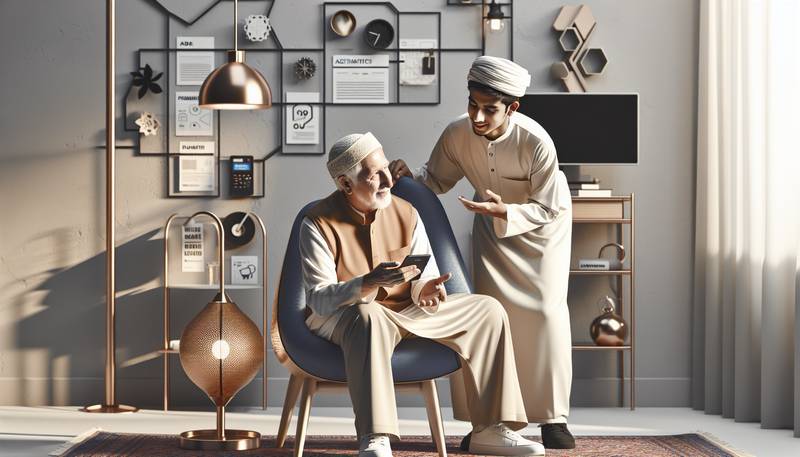Designing for the Elderly: Aesthetics Meets Accessibility

IntroductionAs society ages, designing for the elderly is becoming more and more important. After all, the elderly market is a goldmine of potential customers, with their copious amounts of free time and relatively large disposable incomes. But this lucrative market requires a certain level of finesse, as you need to be able to balance aesthetics with accessibility to keep your older clients happy and coming back for more.Understanding the Elderly PsycheBefore we dive into the nitty-gritty of designing for the elderly, it's important to understand some of the unique challenges that come with aging. For example, did you know that as we age, we become more sensitive to certain colors, while other colors become harder to differentiate? Thus, incorporating a range of contrasting colors and avoiding visually confusing patterns is crucial when designing spaces for an older demographic.Furthermore, it's essential to consider the physical limitations that often accompany aging. For instance, while a spiral staircase might look beautiful in a youthful, energetic space, it might not be the most practical option for someone with mobility issues. So, always keep in mind that functionality is just as important as aesthetics when designing for the elderly.Emphasizing AccessibilityAccessibility is the first principle to keep in mind when designing for the elderly. It's important to ensure that your design is easy to navigate, with clear pathways and ample space for mobility aids such as walkers and wheelchairs. Additionally, consider incorporating elements like ramps and handrails to help your elderly clients move around with ease.Another crucial aspect of accessibility is lighting. Older eyes typically require more light to see clearly, so it's vital to incorporate plenty of well-placed lighting fixtures in your design. This can include both natural light and strategically placed artificial lighting. And don't forget about task lighting for specific activities, like reading or cooking!Balance Aesthetics with FunctionalityNow that we've covered the importance of accessibility, it's time to talk about aesthetics. No one wants to live in a space that looks like a sterile hospital, so it's essential to find ways to incorporate stylish design elements while still prioritizing accessibility. Here are a few tips to help you strike the perfect balance:- Choose high-quality, durable materials: Not only will these materials last longer, but they also tend to look more refined and sophisticated. Plus, they're often easier to clean and maintain, which is a bonus for older clients who may struggle with household chores.
- Opt for timeless designs: While it can be tempting to incorporate the latest design trends into your projects, it's better to stick with more classic styles when designing for the elderly. Timeless designs have broader appeal and tend to age better, meaning your clients won't need to update their spaces as frequently.
- Incorporate decorative elements that serve a purpose: Just because an item is functional doesn't mean it can't also be beautiful. Look for opportunities to add visually appealing elements that also serve a practical purpose, like a stylish grab bar in the bathroom or a decorative handrail along a staircase.
Creating a Sense of CommunityWhen designing for the elderly, it's essential to keep in mind that social interaction is a crucial component of their overall well-being. This means incorporating communal spaces where residents can come together for activities, meals, or simply to chat with neighbors. By fostering a sense of community through your design, you can help combat feelings of isolation that are all too common among older adults.Bringing Nature IndoorsIntegrating natural elements into your design can have a profound impact on the mental and physical health of elderly clients. Studies show that exposure to nature can lower stress levels, boost mood, and even improve cognitive function. So, why not bring a little bit of the great outdoors inside?You can accomplish this by incorporating plenty of natural materials and textures into your design, like wood, stone, and textiles made from organic fibers. Additionally, consider including features like indoor gardens or large windows with views of the surrounding landscape.ConclusionDesigning for the elderly doesn't mean sacrificing style for practicality. By considering accessibility, emphasizing functionality, and incorporating timeless aesthetics, you can create spaces that not only look great but also cater to the unique needs of your older clients. Remember, a well-designed space can have a significant impact on an individual's quality of life, so it's essential to approach these projects with care and attention to detail.
|
|







